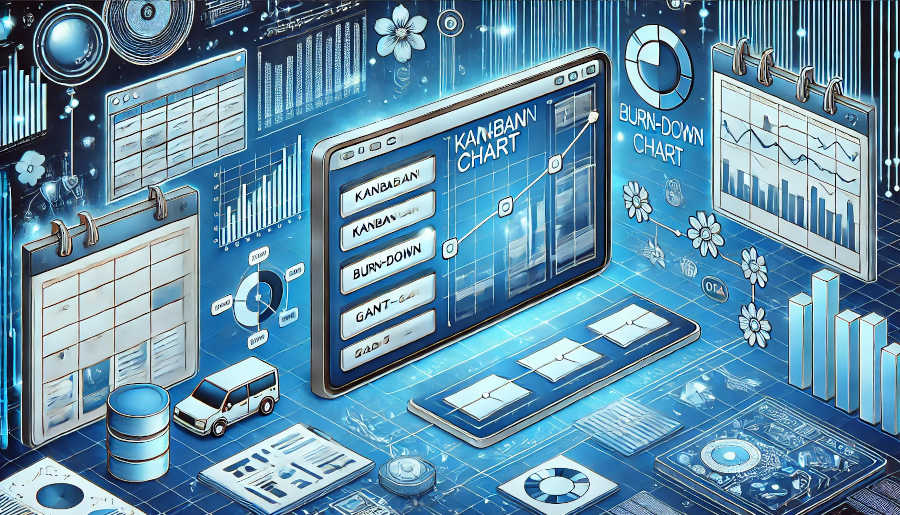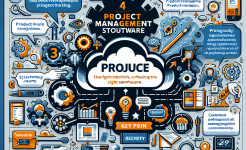The Research and Development Integrated Product Development (IPD) process is a comprehensive approach that aims to streamline the product development lifecycle. It integrates various functions within an organization, including marketing, engineering, and manufacturing, to ensure a more efficient and effective product development journey. At its core, IPD focuses on aligning product development with customer needs from the very beginning.
This process starts with a clear understanding of the market and customer requirements. By conducting in - depth market research, companies can identify the pain points, desires, and expectations of their target customers. This information serves as the foundation for defining the product's features, functions, and quality levels. For example, a smartphone company might discover through research that customers are increasingly concerned about battery life and camera quality. With this knowledge, they can prioritize these aspects in the product development plan under the IPD framework.
Moreover, the IPD process emphasizes cross - functional teamwork. Different departments work together in parallel rather than in a sequential, siloed manner. This collaborative approach allows for early identification of potential issues and conflicts. For instance, the manufacturing team can provide input on the feasibility of a particular design proposed by the engineering team, ensuring that the product can be mass - produced efficiently without sacrificing quality.
Incorporating Customer Feedback Early
One of the key steps in improving customer satisfaction through the R&D IPD process is to incorporate customer feedback right from the start. This involves creating channels for customers to share their thoughts and ideas during the product concept stage. For example, companies can organize focus groups, conduct surveys, or use online platforms to gather feedback on initial product concepts.
By involving customers early, companies can shape the product to better meet their needs. Suppose a software company is developing a new project management tool. Through early customer feedback, they might learn that users prefer a simple and intuitive interface over a complex one with many advanced features. Based on this feedback, the development team can adjust the design to prioritize usability, which is likely to lead to higher customer satisfaction when the product is launched.
In addition, continuous feedback collection during the development process is crucial. This can be done through beta testing, where a limited number of customers are given access to a pre - release version of the product. Their feedback can help identify bugs, usability issues, or areas where the product fails to meet expectations. For example, an automotive company might conduct beta testing of a new electric vehicle. Customers in the beta program can provide feedback on aspects such as charging time, range, and interior comfort, allowing the company to make necessary improvements before the official launch.
Ensuring Product Quality and Reliability
Product quality and reliability are fundamental to customer satisfaction. In the R&D IPD process, strict quality control measures are implemented at every stage. This begins with setting clear quality standards during the product definition phase. For example, a consumer electronics company might define the acceptable level of defects, the durability requirements, and the performance benchmarks for a new television model.
During the development process, rigorous testing is carried out. This includes both laboratory testing and field testing. Laboratory testing can simulate various conditions to ensure that the product meets the defined quality standards. For instance, a tire manufacturer might test the wear resistance, traction, and durability of new tire models in a controlled laboratory environment. Field testing, on the other hand, exposes the product to real - world conditions. A pharmaceutical company might conduct clinical trials in different geographical locations and patient populations to assess the effectiveness and safety of a new drug.
Moreover, the IPD process emphasizes the use of reliable components and materials. By sourcing high - quality components, companies can enhance the overall reliability of the product. For example, a laptop manufacturer might choose to use well - known brand hard drives and memory modules to reduce the risk of hardware failures. This focus on quality and reliability not only reduces the likelihood of product returns and customer complaints but also builds long - term customer loyalty.

Aligning Product Features with Customer Needs
Another important aspect of improving customer satisfaction is to align product features with customer needs. The R&D IPD process helps in this regard by conducting detailed market segmentation. By dividing the market into different segments based on customer characteristics, preferences, and behaviors, companies can develop products that are tailored to specific customer groups.
For example, a clothing brand might identify different market segments such as young fashion - conscious consumers, professional working women, and outdoor enthusiasts. Each segment has different needs and preferences. The young fashion - conscious segment might value trendy designs and affordable prices, while professional working women might prioritize quality fabrics and classic styles. By aligning product features with these segment - specific needs, the brand can increase customer satisfaction within each segment.
In addition, the IPD process helps in prioritizing product features. Not all features are equally important to customers. Through customer research and analysis, companies can determine which features are must - haves and which ones are nice - to - haves. For example, in a mobile banking application, features such as secure login, easy fund transfers, and account balance viewing are likely to be must - haves for customers. By focusing on these critical features during development and ensuring they are well - implemented, companies can enhance customer satisfaction.
Post - Launch Support and Continuous Improvement
The R&D IPD process doesn't end with the product launch. Post - launch support is a vital part of ensuring customer satisfaction. This includes providing prompt customer service, offering product warranties, and addressing any issues or complaints that customers may have. For example, a software company might offer 24/7 customer support through phone, email, or live chat. If a customer encounters a problem with the software, the support team can quickly assist in resolving it, which can prevent customer dissatisfaction from escalating.
Moreover, post - launch is also the time to gather feedback on the product's performance in the real world. This feedback can be used for continuous improvement. For instance, a home appliance manufacturer might collect customer feedback on a new refrigerator model. If customers complain about a noisy compressor or a lack of interior space, the company can use this feedback to make design improvements in future models.
Continuous improvement is a key principle of the IPD process. By constantly analyzing customer feedback, market trends, and technological advancements, companies can enhance their products over time. This not only keeps existing customers satisfied but also attracts new customers. For example, a smartphone company might release software updates regularly to improve the device's performance, add new features, and address security vulnerabilities, thereby increasing customer satisfaction and loyalty.
Conclusion
In conclusion, the R&D IPD process offers a comprehensive framework for improving customer satisfaction. By understanding the process and implementing its key steps, companies can develop products that are better aligned with customer needs, are of high quality and reliability, and are supported both during and after the launch.
The early incorporation of customer feedback allows companies to shape products according to customer expectations from the very start. This reduces the risk of developing products that miss the mark. Ensuring product quality and reliability builds trust among customers, which is essential for long - term success. Aligning product features with customer needs helps in creating products that are relevant and valuable to specific customer segments.
Post - launch support and continuous improvement are equally important. They ensure that customers have a positive experience even after purchasing the product and that the product evolves to meet changing customer needs and market dynamics. Overall, companies that effectively implement the R&D IPD process are more likely to achieve high levels of customer satisfaction, gain a competitive edge in the market, and build sustainable business growth. By investing time and resources in this process, businesses can create products that not only meet but exceed customer expectations, leading to increased customer loyalty and profitability.
ARTICLE TITLE :Key steps for how the R&D IPD process can improve customer satisfaction ,AUTHOR :ITpmlib

















